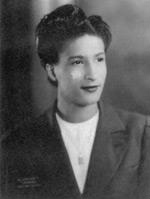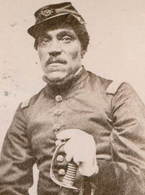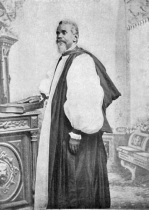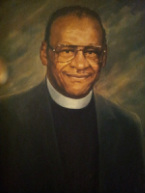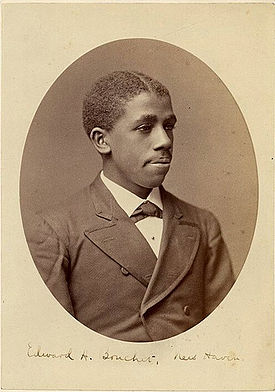St. Luke's Episcopal Church, New Haven
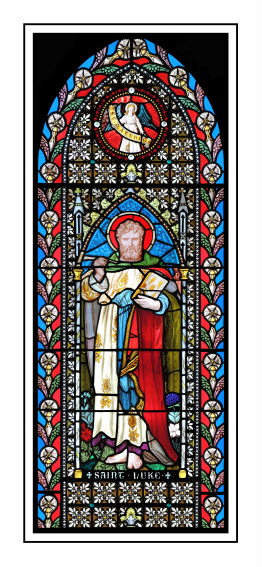
An Episcopal Church in the heart of New Haven was founded on June 7, 1844 at a meeting of the “colored members” of the parish of Trinity Episcopal Church, New Haven. One of the founding members was Alexander DuBois, grandfather of W.E.B DuBois the great African American historian and civil rights leader. Saint Luke’s was one of the first churches in the country, and the third oldest Episcopal Church, with a predominantly African American congregation. The Church also played a crucial role in the assimilation of immigrants, especially from the Caribbean countries, into the local society. Today, St. Luke’s is an inclusive congregation that seeks to follow the radical call of the Gospel within downtown New Haven. Through worship services, prayer and support groups, and an ongoing meals program to the hungry and homeless, the Church opens its doors, offering material and spiritual support to those who find themselves in need in the downtown New Haven area.
The church is located at the southern end of Whalley Avenue, one of New Haven’s main commercial arteries and right in the heart of the sprawling Yale University complex of properties. It is also surrounded by many small business storefronts. In the midst of a mix of affluent university properties, the Church's mission to the poor and disadvantaged is an important extension of the spiritual life of the congregation.
A HISTORY OF SIGNIFICANT SOCIAL ACTION - The early days of St. Luke’s coincided with the end of slavery in Connecticut in 1848 when the Connecticut legislature passed a law providing that “no person should thereafter be held as a slave in Connecticut,” and that “no slave could be brought into the state”. The church has been a place of social action since its beginning. The Reverend James Theodore Holly, the second rector, led a missionary group of parishioners to Haiti in 1861 to establish the Episcopal Church in that country. Despite severe hardships and the loss of several members of the group, Holly himself flourished and was consecrated the first Episcopal Bishop of Haiti in 1874. As a direct result of his efforts, Haiti now boasts one of the largest Episcopal memberships in the world. Reverend Holly was recognized by the National Convention in June 2006 with the establishment of a special day in his honor. Also in the 1860’s the Reverend Samuel Berry was a founding member of the New Haven Freedmen’s Aid Society, part of a coalition of Societies which provided food, clothing and shelter to former slaves. New Haven was a favored destination for some former slaves – its black population was relatively large for a small northern city. In the first decade of the 20th century, the St. Luke’s Women’s Auxiliary was formed. This organization organized “colored missions” and focused on providing food, clothing and shelter to the sick and comforting the bereaved. They also raised money for missionary activities of the national church and organized the Girls Friendly Society. At around the same time, St. Luke’s also had a role in the creation of St. Monica’s church in Hartford and St. Mark’s church in Bridgeport. During the depression years the church continued to support social ministries giving money as needed for necessities such as coal, food or electricity, as well as for Thanksgiving baskets. In the volatile 1960’s period, the church committed to social ministries that extended to the Hispanic community and to the underprivileged. One of the most significant ministries was the provision of the Canterbury Gardens housing for moderate and low income families on Sherman Parkway, which even today remains an integral part of the landscape of New Haven. St. Luke’s was also the site of the Polly McCabe Center for teenage unwed mothers. The school offered instruction toward completing high school, and provided an array of social services. By accepting such a school within its environs, St. Luke’s was seeking to find a solution to an important social problem confronting the community. St. Luke’s was also the home church of Constance Baker Motley, a tireless civil rights advocate in the 50’s and 60’s , who worked with Thurgood Marshall at the NAACP’s Legal Defense Fund and successfully represented African American students denied entrance to colleges in the South. She was the first African American woman to sit on the Federal bench at the U.S District court in New York.
As times have changed, St. Luke’s has continued its mission of community outreach with a focus on the mission “to feed the hungry, to clothe the naked, to visit those in prison”. Today, a feeding program for women and children is a vital part of the outreach thrust of the parish. In addition, several services are offered in conjunction with the feeding ministry - programs for enhancing parenting skills and nutritional knowledge. The parish also provides food through its emergency food pantry and clothes through its Clothes Closet. In addition, the parish is pursuing an activist community development program in its immediate neighborhood environment through the establishment and functioning of the St. Luke’s Development Corporation. Recognizing that the acquisition of real estate in and around the immediate vicinity of the parish is critical to the church’s ability to impact the social, economic and spiritual environment and wellbeing of the St. Luke’s community, the corporation has purchased properties surrounding the church. Some properties are rented to small retail establishments while a recent acquisition is in the process of being turned into a residential home for elderly community members.
HISTORY OF THE CHURCH BUILDING - The St. Luke’s congregation acquired its first permanent church home in April, 1852 when the congregation acquired a property on Park street betwee Crown and George streets. In 1905 the church moved to its present location when construction started on the new church building. It was modeled after a French country church, constructed of brick, with large stained glass windows and a slate roof. The church currently boasts a number of stained glass windows designed by the well-known French stained glass designer Robert Pinart. A chancel rail was installed and choir
stalls and chancel furniture were donated by another congregation. In December, 1964 the church dedicated a new parish hall. The hall was constructed of red brick and cinder block, and included an upper level with a large multipurpose room suitable for dinners or parish meetings, an adjacent kitchen, and a lower level divided into smaller rooms that could be used for Sunday school or meetings. In 2003 the church building was added to the National Register of Historic Places.
COMMITTED TO SERVING ITS COMMUNITY - Aside from its historical significance, the Church continues to be a primary center for service to the most needy members of the New Haven community. This year, the church will accommodate some 20,000 visits from non-congregational members of the community who will benefit from St. Luke’s social outreach ministries. The estimated public value of these services to the local community is $165,000 per year. Currently, the following community outreach activities occur in the St. Luke’s church building and parish hall:
• Feeding Program-Breakfast/Lunch/Food Pantry -This program which receives contributions of food from the Community Soup kitchen of New Haven serves free breakfast on Wednesdays and Saturdays, and lunch on Tuesdays and Thursdays while providing nutritional education and parenting skills training for women recipients of the program. Thanksgiving baskets are also provided to needy families.
• Clothes Closet – collects donated clothes for provision to the community. The program also provides diapers to deserving families as well as toys at Christmas.
• PALS Tutoring program- the church partners with Dwight Hall of Yale University to provide the use of its parish hall for a weekly one-on-one
tutoring program for middle schoolers in the New Haven area.
• Summer and After School programs – With a grant contribution from Casey Family Services, the church operates a Summer program for five weeks in July and August. Activities occur in the parish hall and in the parking lot. The program benefits 25 families. From January through May, the church also sponsors an after school program that offers tutoring to community children.
• Steel Band – St. Luke’s initiated a Steel Band music ministry which provides the opportunity for free musical education to members of the community and periodically gives free community performances.
• Meeting space – The Church’s parish hall is used as a meeting space for a number of community organizations with several organizations using the facility on a monthly basis.
PREPARING FOR A NEW CENTURY OF SERVICE - The Church of Saint Luke’s has been witness to some of the most interesting historical events in New Haven over its almost 162-year history. The congregation has made great efforts to maintain the building in good repair, but the reality of limited financial resources has meant that there has been a tendency to defer maintenance. However, within the last 30 years, the undercroft has been renovated, the pews in the nave were refinished and seat cushions installed. In addition, the flooring of the nave was refinished, and ceiling fans installed. In more recent years, the church was air-conditioned, a new furnace installed, and a handicap ramp and restroom constructed. Little work on the buildings has been done within the last ten years and significant renovations are once again needed. The church roof has been leaking for some time and it has now become critical that the roof be replaced. In addition, the bell tower needs major repairs. Additional improvements urgently needed are as follows: restoration of the stained glass windows, repair/replacement of the furnaces, expansion of the administrative office, upgrading of the bathrooms, and installation of an elevator. The roof of the parish hall will also require replacement in the near future. Given the urgency of the roof problem, the church has sold the parish rectory to raise funds, and will commence work to replace the roof on July 5th. A fund raising drive targeted to the congregation has also started. Despite these efforts, the church anticipates a significant shortfall in the funds needed to complete the much needed renovations, and must of necessity work to secure community and other external funding to maintain this historical institution as a vital community asset.
COMMUNITY SUPPORT FOR A COMMUNITY ASSET - The church is in the process of preparing a comprehensive building assessment that details the plan for building renovation. With support from a loyal group of parishioners, the church will go forward to garner support not only from parishioners, but also from community members interested in preserving the historical and cultural legacy of St. Luke’s and its role in New Haven’s African American community. Together, we can assure the continuity of a church that has been a spiritual foundation in the community for 162 years.
Saint Luke’s Episcopal Church
111 Whalley Avenue
New Haven, CT 06511
(203) 865 0141
The church is located at the southern end of Whalley Avenue, one of New Haven’s main commercial arteries and right in the heart of the sprawling Yale University complex of properties. It is also surrounded by many small business storefronts. In the midst of a mix of affluent university properties, the Church's mission to the poor and disadvantaged is an important extension of the spiritual life of the congregation.
A HISTORY OF SIGNIFICANT SOCIAL ACTION - The early days of St. Luke’s coincided with the end of slavery in Connecticut in 1848 when the Connecticut legislature passed a law providing that “no person should thereafter be held as a slave in Connecticut,” and that “no slave could be brought into the state”. The church has been a place of social action since its beginning. The Reverend James Theodore Holly, the second rector, led a missionary group of parishioners to Haiti in 1861 to establish the Episcopal Church in that country. Despite severe hardships and the loss of several members of the group, Holly himself flourished and was consecrated the first Episcopal Bishop of Haiti in 1874. As a direct result of his efforts, Haiti now boasts one of the largest Episcopal memberships in the world. Reverend Holly was recognized by the National Convention in June 2006 with the establishment of a special day in his honor. Also in the 1860’s the Reverend Samuel Berry was a founding member of the New Haven Freedmen’s Aid Society, part of a coalition of Societies which provided food, clothing and shelter to former slaves. New Haven was a favored destination for some former slaves – its black population was relatively large for a small northern city. In the first decade of the 20th century, the St. Luke’s Women’s Auxiliary was formed. This organization organized “colored missions” and focused on providing food, clothing and shelter to the sick and comforting the bereaved. They also raised money for missionary activities of the national church and organized the Girls Friendly Society. At around the same time, St. Luke’s also had a role in the creation of St. Monica’s church in Hartford and St. Mark’s church in Bridgeport. During the depression years the church continued to support social ministries giving money as needed for necessities such as coal, food or electricity, as well as for Thanksgiving baskets. In the volatile 1960’s period, the church committed to social ministries that extended to the Hispanic community and to the underprivileged. One of the most significant ministries was the provision of the Canterbury Gardens housing for moderate and low income families on Sherman Parkway, which even today remains an integral part of the landscape of New Haven. St. Luke’s was also the site of the Polly McCabe Center for teenage unwed mothers. The school offered instruction toward completing high school, and provided an array of social services. By accepting such a school within its environs, St. Luke’s was seeking to find a solution to an important social problem confronting the community. St. Luke’s was also the home church of Constance Baker Motley, a tireless civil rights advocate in the 50’s and 60’s , who worked with Thurgood Marshall at the NAACP’s Legal Defense Fund and successfully represented African American students denied entrance to colleges in the South. She was the first African American woman to sit on the Federal bench at the U.S District court in New York.
As times have changed, St. Luke’s has continued its mission of community outreach with a focus on the mission “to feed the hungry, to clothe the naked, to visit those in prison”. Today, a feeding program for women and children is a vital part of the outreach thrust of the parish. In addition, several services are offered in conjunction with the feeding ministry - programs for enhancing parenting skills and nutritional knowledge. The parish also provides food through its emergency food pantry and clothes through its Clothes Closet. In addition, the parish is pursuing an activist community development program in its immediate neighborhood environment through the establishment and functioning of the St. Luke’s Development Corporation. Recognizing that the acquisition of real estate in and around the immediate vicinity of the parish is critical to the church’s ability to impact the social, economic and spiritual environment and wellbeing of the St. Luke’s community, the corporation has purchased properties surrounding the church. Some properties are rented to small retail establishments while a recent acquisition is in the process of being turned into a residential home for elderly community members.
HISTORY OF THE CHURCH BUILDING - The St. Luke’s congregation acquired its first permanent church home in April, 1852 when the congregation acquired a property on Park street betwee Crown and George streets. In 1905 the church moved to its present location when construction started on the new church building. It was modeled after a French country church, constructed of brick, with large stained glass windows and a slate roof. The church currently boasts a number of stained glass windows designed by the well-known French stained glass designer Robert Pinart. A chancel rail was installed and choir
stalls and chancel furniture were donated by another congregation. In December, 1964 the church dedicated a new parish hall. The hall was constructed of red brick and cinder block, and included an upper level with a large multipurpose room suitable for dinners or parish meetings, an adjacent kitchen, and a lower level divided into smaller rooms that could be used for Sunday school or meetings. In 2003 the church building was added to the National Register of Historic Places.
COMMITTED TO SERVING ITS COMMUNITY - Aside from its historical significance, the Church continues to be a primary center for service to the most needy members of the New Haven community. This year, the church will accommodate some 20,000 visits from non-congregational members of the community who will benefit from St. Luke’s social outreach ministries. The estimated public value of these services to the local community is $165,000 per year. Currently, the following community outreach activities occur in the St. Luke’s church building and parish hall:
• Feeding Program-Breakfast/Lunch/Food Pantry -This program which receives contributions of food from the Community Soup kitchen of New Haven serves free breakfast on Wednesdays and Saturdays, and lunch on Tuesdays and Thursdays while providing nutritional education and parenting skills training for women recipients of the program. Thanksgiving baskets are also provided to needy families.
• Clothes Closet – collects donated clothes for provision to the community. The program also provides diapers to deserving families as well as toys at Christmas.
• PALS Tutoring program- the church partners with Dwight Hall of Yale University to provide the use of its parish hall for a weekly one-on-one
tutoring program for middle schoolers in the New Haven area.
• Summer and After School programs – With a grant contribution from Casey Family Services, the church operates a Summer program for five weeks in July and August. Activities occur in the parish hall and in the parking lot. The program benefits 25 families. From January through May, the church also sponsors an after school program that offers tutoring to community children.
• Steel Band – St. Luke’s initiated a Steel Band music ministry which provides the opportunity for free musical education to members of the community and periodically gives free community performances.
• Meeting space – The Church’s parish hall is used as a meeting space for a number of community organizations with several organizations using the facility on a monthly basis.
PREPARING FOR A NEW CENTURY OF SERVICE - The Church of Saint Luke’s has been witness to some of the most interesting historical events in New Haven over its almost 162-year history. The congregation has made great efforts to maintain the building in good repair, but the reality of limited financial resources has meant that there has been a tendency to defer maintenance. However, within the last 30 years, the undercroft has been renovated, the pews in the nave were refinished and seat cushions installed. In addition, the flooring of the nave was refinished, and ceiling fans installed. In more recent years, the church was air-conditioned, a new furnace installed, and a handicap ramp and restroom constructed. Little work on the buildings has been done within the last ten years and significant renovations are once again needed. The church roof has been leaking for some time and it has now become critical that the roof be replaced. In addition, the bell tower needs major repairs. Additional improvements urgently needed are as follows: restoration of the stained glass windows, repair/replacement of the furnaces, expansion of the administrative office, upgrading of the bathrooms, and installation of an elevator. The roof of the parish hall will also require replacement in the near future. Given the urgency of the roof problem, the church has sold the parish rectory to raise funds, and will commence work to replace the roof on July 5th. A fund raising drive targeted to the congregation has also started. Despite these efforts, the church anticipates a significant shortfall in the funds needed to complete the much needed renovations, and must of necessity work to secure community and other external funding to maintain this historical institution as a vital community asset.
COMMUNITY SUPPORT FOR A COMMUNITY ASSET - The church is in the process of preparing a comprehensive building assessment that details the plan for building renovation. With support from a loyal group of parishioners, the church will go forward to garner support not only from parishioners, but also from community members interested in preserving the historical and cultural legacy of St. Luke’s and its role in New Haven’s African American community. Together, we can assure the continuity of a church that has been a spiritual foundation in the community for 162 years.
Saint Luke’s Episcopal Church
111 Whalley Avenue
New Haven, CT 06511
(203) 865 0141

